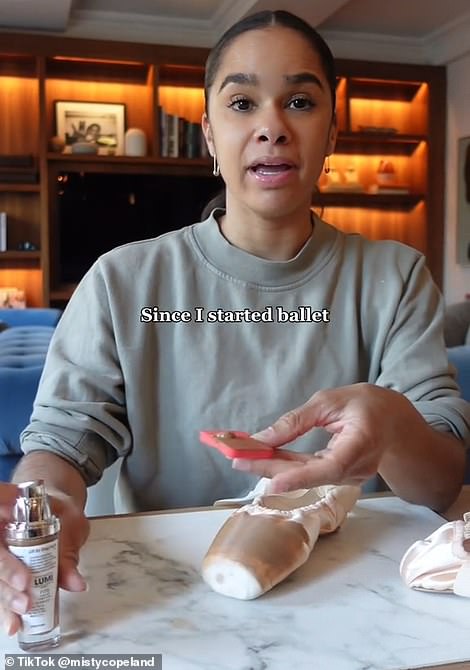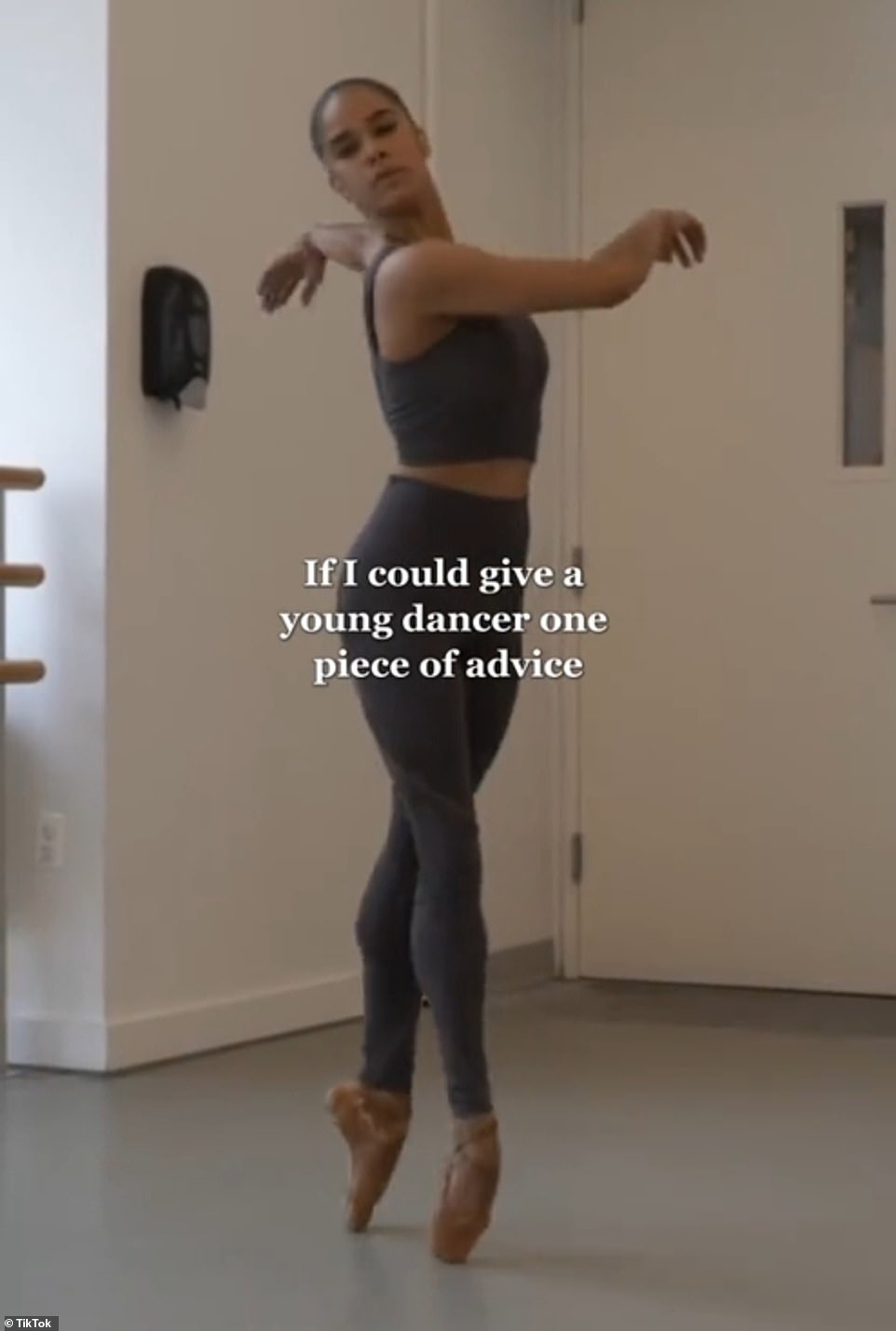Ballerina Misty Copeland goes viral after revealing she has to paint her pointe shoes with FOUNDATION – because companies don’t make any to match her skin tone
Misty Copeland has candidly revealed she was forced to paint her pointe shoes with foundation because she couldn't find a color to match her skin tone.
The ballerina, who made history by becoming the first black woman to become a principal dancer at the American Ballet Theater, posted a TikTok to open up about the situation.
The 41-year-old admitted that she has to dab foundation on the shoes because it is important to her the 'aesthetic' to 'create a long continuous line' from head to toe.
Despite her success in the industry, she admitted that she often felt left out because she “didn't have the option of having pointe shoes or ballerinas in (her) color.”
Misty Copeland has candidly revealed she has to paint her pointe shoes with foundation because she can't find a color that matches her skin tone
In the clip, which has been viewed more than 16 million times to date, Misty begins: “Ever since I started ballet, my pointe shoes have been ruining my skin tone.”
Misty explained that dancers have “different methods,” but added, “I always go to a drugstore and find the cheapest brand.”
She then sponges the beauty product onto the ballet slippers, following the grain of the satin, which the star claimed “really covers the entire shoe without any stains.”
The dancer continued, “I've destroyed so many pillows, couches, and clothes because this foundation came all over them.
'It's really annoying and time-consuming, especially the ribbons and elastics. I have to go through a few pointe shoes in a few hours, so I have to do a few a night.”
Reflecting on the situation, Misty said, “This is the reality for many black and brown dancers.
“There are a number of companies now making different shades, but that hasn't always been the case.”
She concluded: 'I do this because in ballet and aesthetics it is so important that we create a long, continuous line that goes from the tips of our toes to our heads, and it must all be the same color.


The ballerina, who made history by becoming the first black woman to become a principal dancer at the American Ballet Theater, posted a TikTok to draw attention to the situation.






Her video was quickly flooded with comments as other social media users showered the praise
'The choice to have ballet pointe shoes or ballet slippers in my color often made me feel left out.'
Misty recently launched her own petition on the issue in an effort to make ballet more “inclusive.”
Her video was quickly flooded with comments as other social media users showered the praise.
One person wrote: 'HOW IS THERE NOT A COMPANY THAT MAKES MISTY COPELAND POINTE SHOES IN THE RIGHT COLOR???'
A second person wrote: 'The fact that companies don't choose to make shoes for Misty Copeland is insane.'
“The fact that MISTY FREAKING COPELAND STILL has to tell us this after years of being the star of the ballet world. Awful. Do better,” a third person wrote.
“I remember being in winter guard in high school and having to dye my shoes. I was the only one who had to do that,” said a fellow ballet dancer.
Others commented and suggested she launch a pointe shoe brand of her own.
One person wrote: 'Seriously queen, launch your own brand!!'
“Girl, if you don't start your own company and become the Fenty Beauty of ballet shoes,” someone else humorously commented.

Misty recently launched her own petition on the issue in an effort to make ballet more “inclusive.”
Misty previously posted an informative video that answered: “Why are the pointe shoes pink?”
She captioned the clip: “Changing the Apple pointe emoji represents a small but important step toward inclusivity in the ballet world and beyond.”
The segment informed viewers that “ballet began in 15th century Italy as an art designed for the white European elite.
'In the 17th century, ballet flourished in France, reflecting the tastes of European aristocrats like King Louis the 14th, and then the European pink ballet shoe was born – to create a seamless extension of the dancer's leg.
'In the romanticism of the 19th century, pointe work was in the spotlight.
The color of the 'pointe shoes' was intended to accentuate an elongated, continuous visual line for the ballerina, all of whom were light-skinned at the time.
'This pink shade underlines ballet's Eurocentric origins, a reminder of an era when ballet was mainly by and for white Europeans.'
The video went on to explain that “although black and brown people have been dancing ballet for generations,” there is still a lack of diverse shades available in the industry.
